Introduction to Almond-Based Smoothies
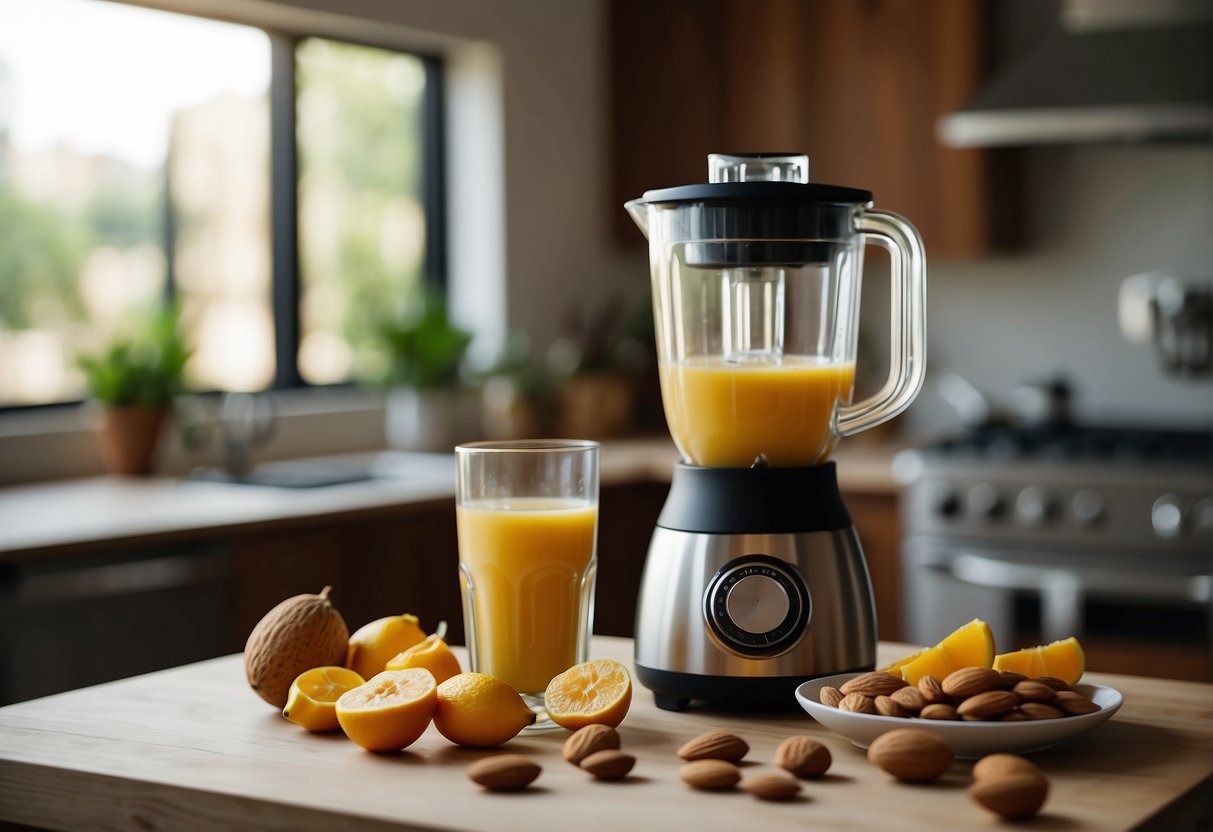
When I toss almonds into my smoothie, it’s not just for the crunch. These little nuts pack a nutritional punch that can transform any blend into a powerhouse drink.
Benefits of Almonds in Smoothies
I’ve found that incorporating almonds into smoothies is a no-brainer for upping my nutrition game. They’re loaded with protein, essential fiber, and are a great source of vitamin E and magnesium. Adding almonds to my smoothie routine means I’m not just satisfying hunger, but I’m also fueling my body with some serious antioxidants. Not to mention, almonds contribute to a smoothie’s creamy texture and add a rich, nutty flavor.
Types of Almonds to Use
When it comes to choosing almonds for my smoothies, I’ve got options:
- Raw Almonds: I soak these overnight to soften them up.
- Roasted Almonds: They give a deeper flavor but watch out for added oils and salt.
- Almond Butter: For a smooth texture without the hassle, a spoonful of almond butter does the trick.
- Almond Milk: It’s perfect for creating a liquid base that’s both dairy-free and protein-packed.
Using almonds in various forms ensures my smoothies are not just versatile but also nutrient-rich and satisfying.
Selecting Your Ingredients
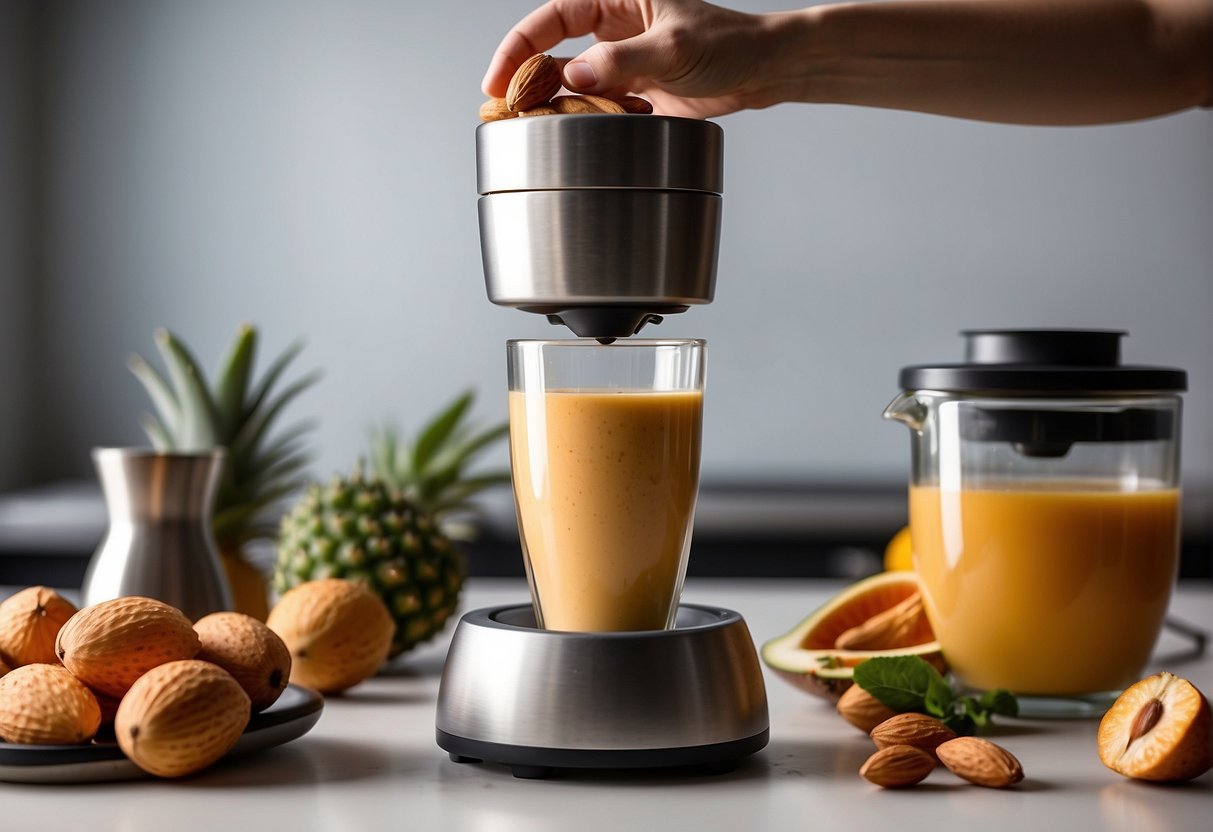
When I blend up a smoothie, I focus on the harmony of flavors and nutritional benefits. Quality ingredients can really elevate a simple almond smoothie to something exceptional.
Choosing the Right Milk Base
I like to start with a good milk base. Almond milk is my go-to because it’s light, dairy-free, and complements the nutty theme. But, if I’m after more creaminess and fat, full-fat dairy milk or coconut milk are excellent choices. For a banana almond smoothie or something tropical, coconut water is fantastic – it’s hydrating and naturally sweet.
Incorporating Fruits and Vegetables
Fruits are the heart of any smoothie. I usually toss in a banana for creaminess and frozen strawberries for a natural sweetness. Blueberries and pineapple bring in a tart dimension, rich in vitamins and a fruity taste. For greens, a handful of spinach doesn’t overpower the drink and sneaks in some extra vitamins and potassium.
Adding Sweeteners and Flavor Enhancers
Lastly, I consider if my smoothie needs a sweetener or an extra kick of flavor. Dates are great for adding natural sugar without the spike in blood sugar levels. For a burst of flavor, vanilla or almond extract deepens the aroma. If I’m looking to amp up the protein, a scoop of gluten-free protein powder does the trick. And let’s not forget a small handful of raw almonds for that delightful crunch.
Essential Equipment
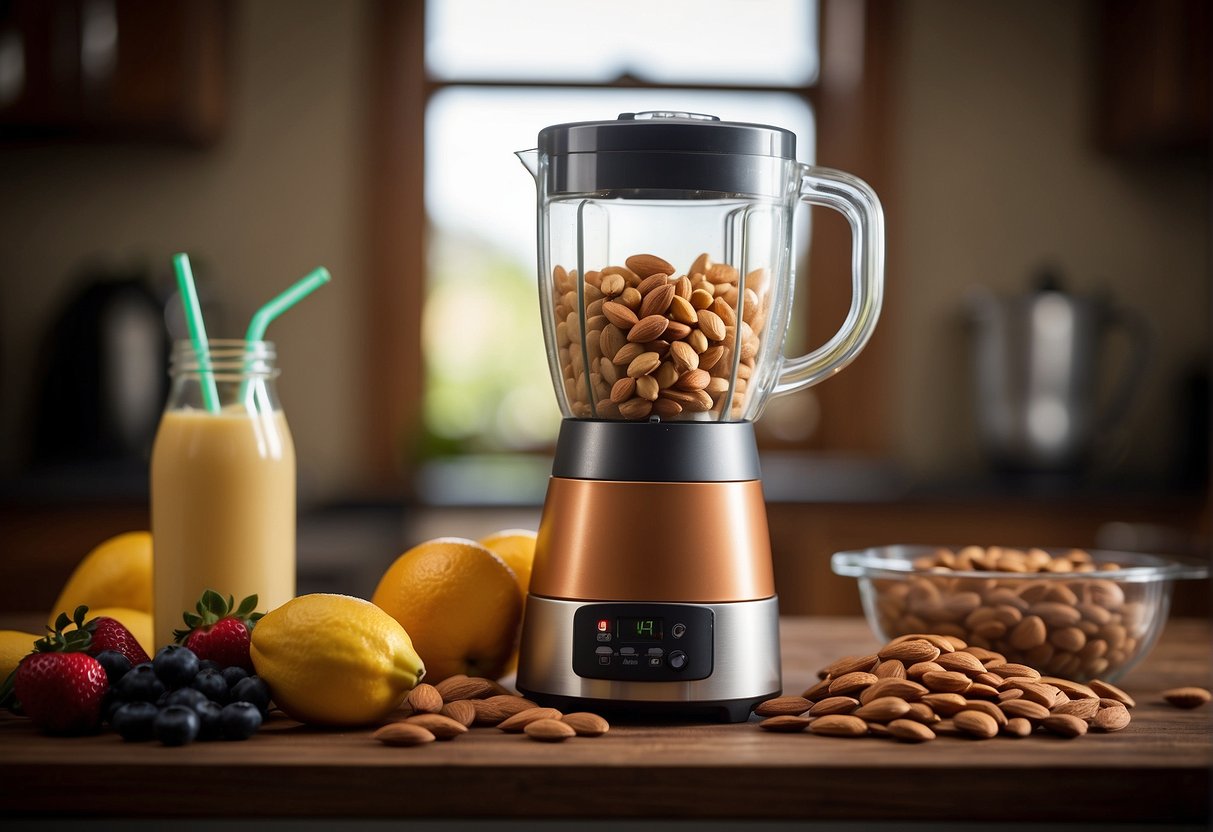
When I make a smoothie with almonds, I focus on two things: texture and creaminess. The key to getting both just right is having the right equipment. Here’s what I use:
-
Blender: This is non-negotiable. A powerful blender makes all the difference. My go-to is something with high wattage that can pulverize almonds into a fine consistency. The stronger the blender, the smoother the smoothie. Models like Ninja blenders are a good choice.
-
Soaking Container: I start by soaking my almonds overnight. This softens them up and makes them easier to blend, helping achieve that smooth texture. A simple bowl does the trick.
-
Measuring Cups: Precision is key. I measure my almonds and liquid to ensure I get the perfect balance between thickness and drinkability.
Here’s a quick checklist:
- High-wattage blender
- Bowl for soaking almonds
- Measuring cups/spoons
With these essentials, I can turn my almonds from crunchy to creamy without hassle. And if you’re wondering, yes, the creamy texture in a smoothie isn’t just delightful—it’s possible, with the right tools.
Preparation Techniques
When I make a smoothie, I aim for that perfect creamy texture that makes each sip delightful. Getting almonds blended in smoothly is all about the preparation. Here’s how I do it:
Soaking Almonds for Smoothness
So, I always start by soaking my almonds. I’ve learned that if you soak them for a bit, they blend easier and you won’t get any of those unexpected crunchy bits. Here’s what I do:
- Place almonds in a bowl.
- Cover with water (they’ll swell up, so make sure there’s extra water).
- Let them soak for at least 30 minutes or overnight for the best results.
This soaking step helps in softening the almonds, which is ideal for a creamy texture in your smoothie.
Blending to Perfection
Now, for the blending. My go-to process is:
- Drain the soaked almonds.
- Toss them into your blender.
- Add a bit of liquid (like almond milk or water) for easier blending.
- Blend on high until completely smooth – patience is key here.
It usually takes me a couple of minutes to blend everything into a silky, smooth texture. If the smoothie is too thick, I just add a splash more liquid and blend again. Getting that creamy consistency without any bits is my top priority, and the soak and blend technique never lets me down.
Crafting the Perfect Almond Smoothie

I’ve found that the key to a superb almond smoothie lies in the balance of flavors and textures that keep you full and satisfied. Let’s dive into creating that flawless blend.
Standard Almond Smoothie Recipe
Ingredients:
- 1 cup unsalted almonds (soaked overnight)
- 2 tbsp honey, maple syrup, or agave nectar
- 1 cup almond milk or any plant milk of your choice like oat milk
- A handful of ice cubes
- Optional: 1 tbsp chia seeds for extra creaminess
Instructions:
- Start by adding the soaked almonds to your blender.
- Pour in the almond milk for that smooth, almond milk smoothie base.
- Add your sweetener – honey, maple syrup, or agave nectar works beautifully for a touch of natural sweetness.
- Throw in the ice cubes to chill and thicken the mixture.
- Blend until smooth. If it’s too thick, adjust by adding more milk.
Creative Variations
For those who crave a bit more zing, I love to experiment with flavors and textures. Here are a couple of twists:
Almond Butter Smoothie:
- Swap out soaked almonds for 2 tbsp of creamy almond butter.
- Introduce a sprinkle of cinnamon or a dash of vanilla extract to enhance the depth of flavor.
Green Almond Smoothie:
- Mix in a handful of leafy greens to pack in those nutrients.
- Avocado can bring in a lovely velvety texture and increase the calorie content for a more filling drink.
- Walnuts or a variety of nuts can be added alongside almonds for a nutty flavor explosion.
Whether you blend up a standard almond smoothie or play with variations, you’re sure to enjoy a drink that’s as nutritious as it is delicious.
Health and Nutritional Information
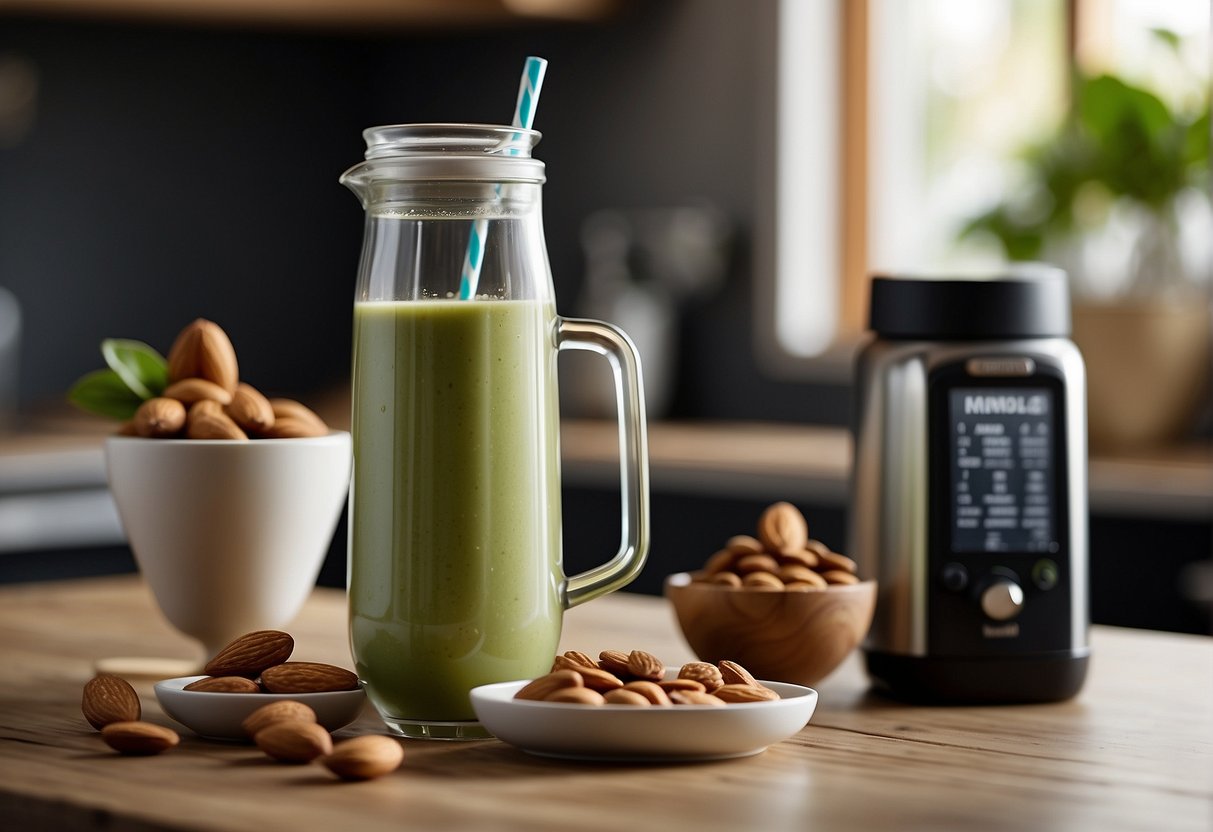
When I blend almonds into my smoothies, I’m not just going for taste – I’m packing in a bunch of nutritional benefits that come along with these nuts. They’re a really healthy addition, full of good stuff that my body needs.
Macronutrient Profile of Almond Smoothies
So, what’s actually in an almond smoothie from a macronutrient perspective? First off, almonds are a solid source of protein, which is super important for muscle repair and growth. I also get a good amount of dietary fiber from them, which keeps my digestion running smoothly. Plus, almonds have healthy fats, specifically monounsaturated fats, that support heart health.
Macronutrients in a typical almond smoothie (1 oz almonds):
- Calories: 164
- Protein: 6g
- Fat: 14g (1g saturated, 9g monounsaturated, 3g polyunsaturated)
- Carbohydrates: 6g
- Fiber: 3.5g
Key Vitamins and Minerals
Almonds don’t just stop at macronutrients; they’re like a treasure trove of vitamins and minerals. Vitamin E is a biggie – it’s a powerful antioxidant that’s good for my skin and helps protect my cells from damage. And when it comes to minerals, almonds have them in spades: magnesium for nerve function, potassium for blood pressure regulation, and manganese, which plays a role in several biochemical processes.
Here’s the skinny on what these nuts bring to the table:
- Vitamin E: About 7.3 mg, which is a hefty chunk of my recommended daily intake.
- Magnesium: 76 mg, a mineral that’s crucial for many bodily functions.
- Potassium: 200 mg, to help keep my electrolyte levels balanced.
- Manganese: 0.6 mg, for metabolism and antioxidant defense.
By blending almonds into my smoothie, I’m not just making a drink; I’m creating a nutrient-dense treat that fuels my body and supports my overall well-being.
Special Dietary Considerations
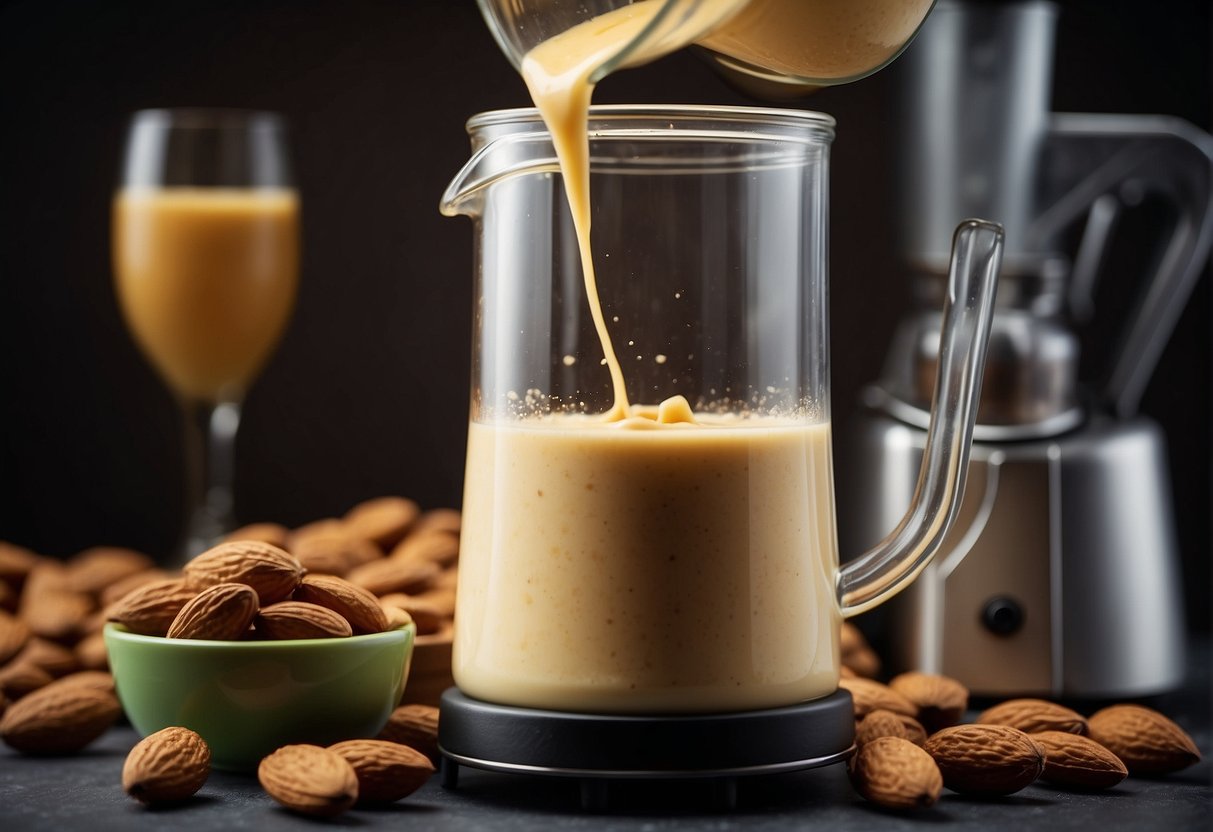
When I whip up smoothies, I’m mindful of dietary restrictions. I aim to pack my blends with nutrients while catering to various eating habits. Let’s get into how you can do the same, focusing on vegan and gluten-free, dairy-free choices.
Making Your Smoothie Vegan
To ensure my smoothie is vegan, I go for plant-based proteins like chia seeds or a scoop of vegan protein powder. I often opt for unsweetened almond milk as the base; it’s a great source of healthy fats and keeps things dairy-free. Sometimes, I’ll toss in a tablespoon of almond butter for that extra richness and flavor.
Navigating Gluten-Free and Dairy-Free Options
For a gluten-free and dairy-free smoothie, I stick to ingredients I know are safe. Unsweetened almond milk is my go-to base—it’s gluten-free and provides that creamy texture. Plus, I always double-check the labels on my add-ins, like protein powders, to ensure they don’t sneak in any gluten or dairy.
Enjoying Your Smoothie
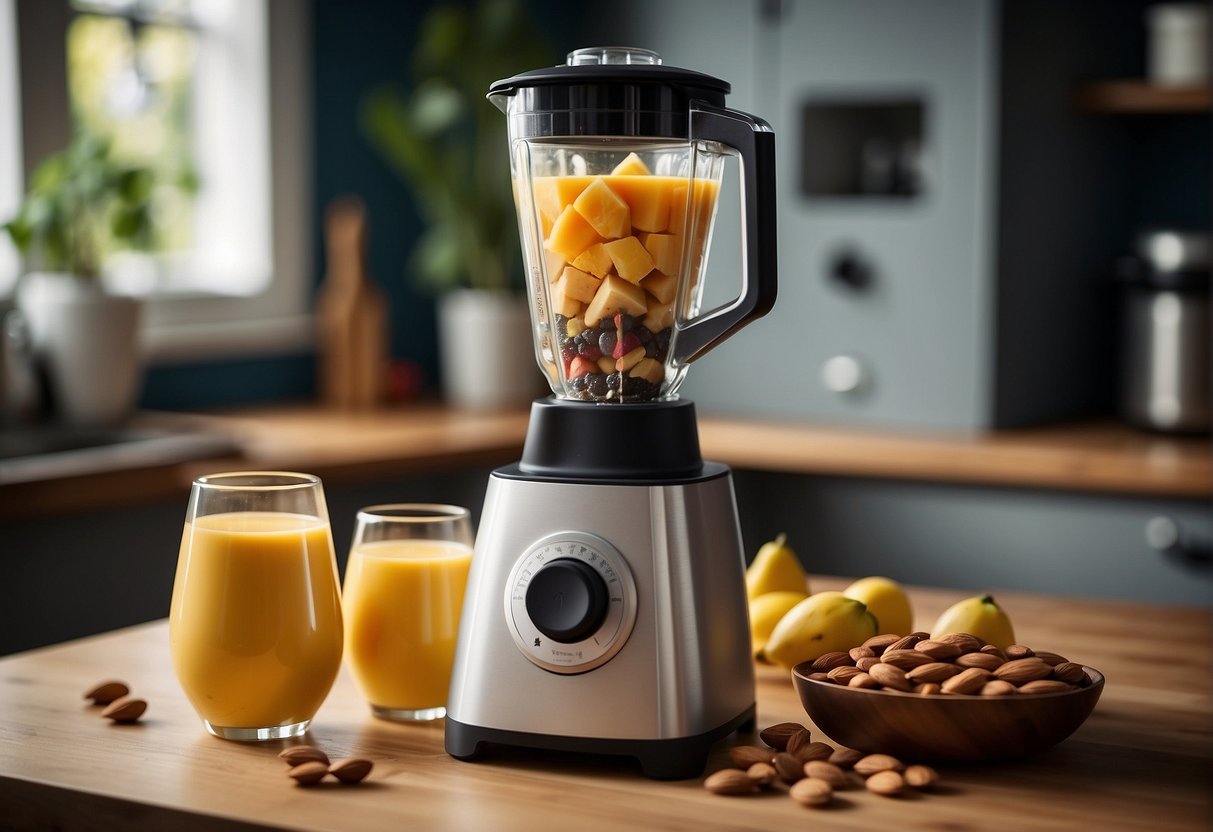
When I blend almonds into my smoothie, it’s not just about sipping on something delicious; it’s about creating a fulfilling beverage that serves a purpose. Whether I need a quick breakfast on-the-go or a post-gym pick-me-up, my almond-infused smoothie is where it’s at!
Smoothie as a Meal Replacement
For breakfast, I love to make my smoothie a complete meal. I toss in a ripe banana for natural sweetness and to make me feel full. A scoop of protein powder and a generous dollop of almond butter kick the nutritional value up a notch. It’s like a protein shake that keeps me satisfied and going until lunch.
Smoothie as a Snack or Post-Workout Boost
When I’m looking for a healthy snack or something to recharge after a workout, I grab my almond smoothie. It’s lighter than my meal replacement version but still packs a protein punch. Plus, it’s quick and convenient, keeping me from reaching for less healthy options.
Frequently Asked Questions
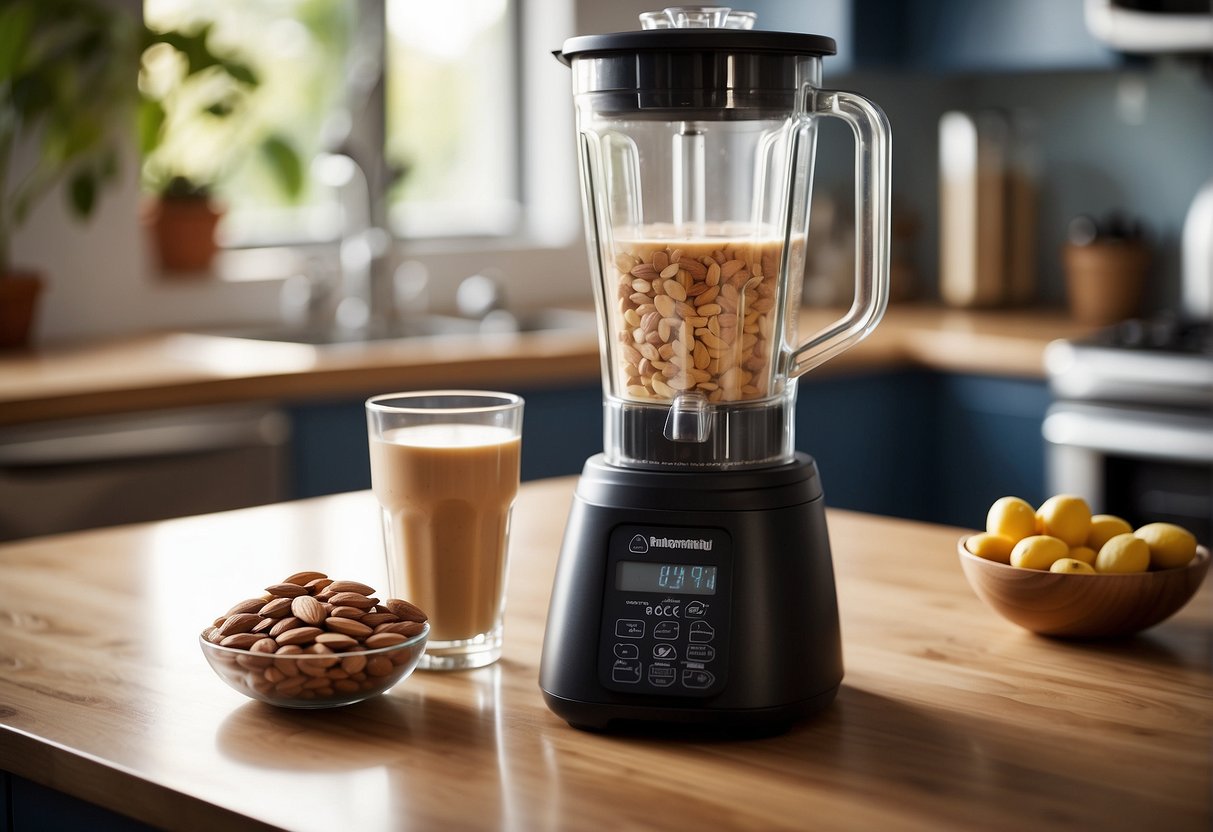
I often get asked about the ins and outs of adding almonds to smoothies. Here are some of the top questions I hear, along with my straightforward answers to help make your almond-infused drinks delicious and nutritious.
How can I incorporate almonds into a smoothie for a healthy treat?
I like to blend almonds into a smooth paste that can easily mix with other ingredients. For a smoother texture, almond butter works great and mixes in seamlessly. For an interesting texture, throwing in whole almonds will give your smoothie a good crunch!
What’s a good almond smoothie recipe for weight management?
When I’m looking after my calorie intake, a recipe with low natural sugars and healthy fats is my go-to. I swap half of a banana for frozen cauliflower and use unsweetened almond milk. Adding a couple tablespoons of almonds enhances the flavor without adding too many calories.
How many almonds is ideal to add to my smoothie?
I usually drop six to eight almonds into my smoothie. It’s enough to get those nutritional benefits without overpowering other flavors. Plus, it’s a quick way to add some extra crunch and protein!
What are the nutritional benefits of adding almonds to my smoothie?
I add almonds for a boost of healthy fats, fiber, protein, and important vitamins like Vitamin E. They’re also great for getting magnesium and antioxidants, which are excellent for my skin and overall health.
Can I toss raw almonds into my smoothie mix?
Absolutely, I often add raw almonds directly into the blender. But if your blender isn’t super powerful, you might end up with a gritty texture. I recommend using a high-wattage blender to achieve a finer consistency.
Are there any ingredients that shouldn’t be combined with almonds in a smoothie?
In my experience, almonds are pretty versatile. However, I try to avoid overly sweet ingredients if I’m adding flavored almonds to keep the sugar content in check. A good rule of thumb is balancing the flavors to your liking and dietary needs.
